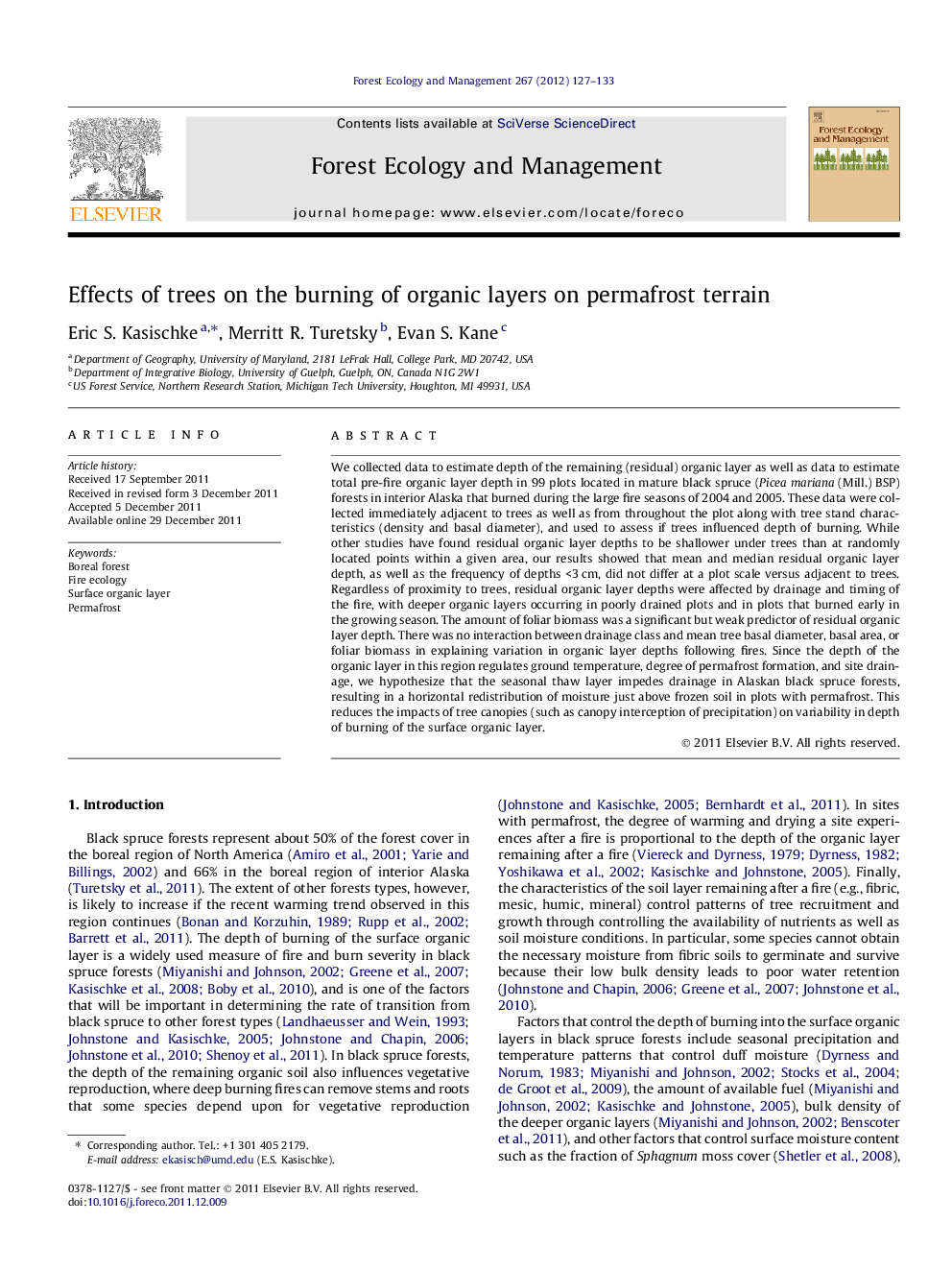| Article ID | Journal | Published Year | Pages | File Type |
|---|---|---|---|---|
| 87617 | Forest Ecology and Management | 2012 | 7 Pages |
We collected data to estimate depth of the remaining (residual) organic layer as well as data to estimate total pre-fire organic layer depth in 99 plots located in mature black spruce (Picea mariana (Mill.) BSP) forests in interior Alaska that burned during the large fire seasons of 2004 and 2005. These data were collected immediately adjacent to trees as well as from throughout the plot along with tree stand characteristics (density and basal diameter), and used to assess if trees influenced depth of burning. While other studies have found residual organic layer depths to be shallower under trees than at randomly located points within a given area, our results showed that mean and median residual organic layer depth, as well as the frequency of depths <3 cm, did not differ at a plot scale versus adjacent to trees. Regardless of proximity to trees, residual organic layer depths were affected by drainage and timing of the fire, with deeper organic layers occurring in poorly drained plots and in plots that burned early in the growing season. The amount of foliar biomass was a significant but weak predictor of residual organic layer depth. There was no interaction between drainage class and mean tree basal diameter, basal area, or foliar biomass in explaining variation in organic layer depths following fires. Since the depth of the organic layer in this region regulates ground temperature, degree of permafrost formation, and site drainage, we hypothesize that the seasonal thaw layer impedes drainage in Alaskan black spruce forests, resulting in a horizontal redistribution of moisture just above frozen soil in plots with permafrost. This reduces the impacts of tree canopies (such as canopy interception of precipitation) on variability in depth of burning of the surface organic layer.
► Residual organic layer depth was measured in black spruce forests located on permafrost terrain. ► No significant differences in depth were found in areas under trees compared to areas away from trees. ► Canopy interception of precipitation is not a dominant factor influencing duff moisture. ► Permafrost dynamics are the dominant control on duff moisture in Alaskan black spruce forests.
